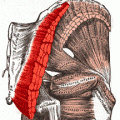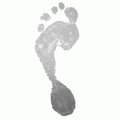In a previous article, I discussed a common pitfall many motivated athletes fall into. Namely, they fail to take prescribed easy or low intensity workouts seriously, letting those workouts morph into not-so-easy sessions that take them into a counterproductive “dead-end training zone.” In this article, I sketch out a scenario to illustrate in more specific terms the concept of the dead-end training zone.
As I previously noted:
By a dead-end training zone, I mean a training zone that is neither hard enough to produce a substantial training effect nor easy enough to allow for proper recovery between key workouts. This type of training devolves into that dreaded enemy of time-crunched athletes known as “junk miles” or “wasted workouts.” To avoid the dead-end training zone, it is important to have a purpose for each training session. In addition, one must respect that purpose and adhere to the mantra of keeping the hard days hard and the easy days easy.
In terms of the training zone system I use with athletes (as detailed in The Triathlete’s Training Guide), the dead-end zone frequently manifests itself when athletes turn prescribed workouts in Zones 1-2 into Zone 3 efforts.
Easy or recovery workouts in Zone 1 are designed to aid recovery, loosen you up for key workouts, and add to your training volume. Endurance workouts in Zone 2 contribute to your training volume and target improved aerobic efficiency—namely, the ability to metabolize fat and spare glycogen as a long duration energy source. Work in Zones 1-2 helps build that all-important aerobic base and prepares you for higher intensity workouts at other points in your training plan.
Let’s take a look at a specific scenario where an athlete falls into the dead-end zone:
Ronnie the Runner meets up with his training group for a run around the park. He is coming off some hard training days in preparation for an upcoming race, so on this day his training plan calls for an easy day. Specifically, he aims to target a 30-40 minute run in Zones 1-2.
As Ronnie the Runner starts out on this day’s training run with the group, the pace is conversational and his heart rate monitor indicates he is well within his prescribed range. But at 15 minutes into the run, a few members of the group start pushing the pace. As a result, the whole group speeds up; and Ronnie the Runner, feeling pretty good, decides to match the pace. At the end of the workout, he realizes he did the bulk of the run in Zone 3 instead of his prescribed “easy” run for the day.
The next day, he goes out for his prescribed threshold workout, which calls for cruise intervals in Zone 4. Feeling fatigued, he is unable to match the prescribed pace and ends up doing half of the intervals in Zone 3 before ending the workout to go home early and rest.
In this scenario, Ronnie the Runner falls into the classic pitfall of the dead-end training zone. Neither reaping the benefits of the easier run nor the benefits of the harder workout, he middles along in a dead-end training zone. In this case, he gets stuck in Zone 3 at a pace that is too hard on his easy day and too easy on his hard day.
At best, if Ronnie the Runner learns how to adjust his training to avoid the dead-end zone, this incident will only slow his progress by a few days as he backs up to get in his needed recovery days so he is ready to come back for the intended hard days. At worst, if Ronnie the Runner repeats this scenario on a frequent basis, he will hit a training plateau or dig himself into an overtraining hole.
What could Ronnie the Runner have done differently in the above scenario?
Sure, it would have been better if he had used the group training run as a truly easy day, staying in Zones 1-2. But, there is another option he could have chosen to avoid the dead-end zone while feeding that day’s need for speed.
As the pace quickened, he could have pushed it even harder into Zone 4 and turned the workout into a tempo run closer to threshold pace. If he truly felt good and was in a fresh enough state to handle the pace, this would have provided him with a quality workout. He would then adjust his schedule over the coming days, turning the next day’s originally planned threshold workout into an easy session. As a result, the adjustments would have allowed him to stay on track to hit the training objectives for the week.
The take away point from this scenario is that if you are really feeling fresh on those prescribed easy days and feel the need for speed; then go ahead and target a true quality workout. But if you do so and find that pace too demanding; then that’s all the more reason to remain in the prescribed lower intensity zones. The bottom line is that you want to avoid drifting into the dead-end training zone.
Remember, effective training requires more than simply training hard. It requires training smart by systematically balancing hard and easy days to attain sought after fitness gains. Respect the integral role that easy days play in your program and you will reap the rewards with faster times down the road.
To learn more about how to apply a systematic, recovery based approach to your training, check out The Triathlete’s Training Guide.







